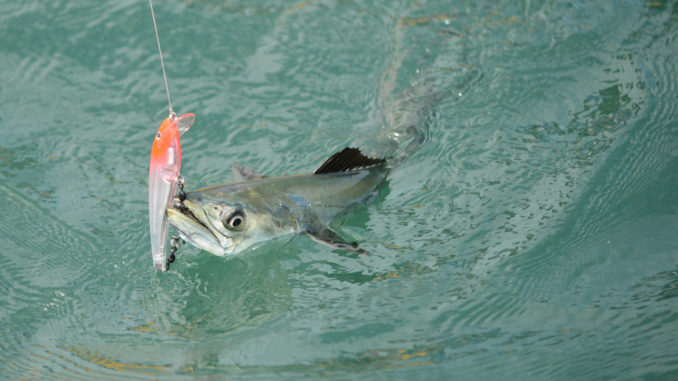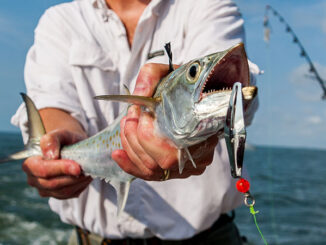
Charleston guide says to cover plenty of water and fish when the tide is moving
The warming weather and returning glass minnows have brought schools of hungry Spanish mackerel to waters just outside Charleston Harbor. Capt. Mike Able of Able Minded Charters is one guide who spends plenty of time targeting them, and he offered five tips to help fishermen put more fish in the cooler.
1. * Fish with the tide. Able said schools of Spanish mackerel won’t be far behind the moving tide. “In most cases, you will find Spanish moving with the tide in deep, open water,” he said. “Follow the schools of glass minnows that will be moving with the tide.” Able suggests fishing an outgoing tide early in the morning to avoid the boat traffic, which will become busier as the weather warms up.
2. * Look for the birds. Diving birds are a dead giveaway that a ball of baitfish is being pushed to the surface by predators feeding below. Birds can be spotted from a distance if a boater is riding around, looking for fish. “Even on the trips I’m not specifically targeting Spanish mackerel, I’ll have a rod ready with a spoon tied on if I see birds diving nearby,” Able said. “It’s some quick-fire action.”
3. * Troll around. Cover plenty of water. “Trolling is a great method for people who want to cover large amounts of water while trying to locate a school,” said Able (843-475-7696). “When anglers catch a few fish in an area, they should turn around and make a few more passes.” When trolling, Able uses plainer boards and silver or gold Size OO Clark Spoons. He suggests attaching the spoon to a short wire leader connected by a barrel swivel to the main line to prevent cutoffs from sharp teeth and tangles from the twisting spoon.
4. * Cast around. When schools of Spanish are holding well below the surface and can’t be seen, Able, who manages Haddrell’s Point Tackle in Mount Pleasant, suggests making long casts with a heavy Shur Strike casting jig and cover a lot of deeper water with a single cast. “I might pull up into an area and make a couple of casts to see if any fish are in the area,” he said. “I would not suggest staying in an area for more than an hour in one location without any bites.” He also suggests that fishermen cut off one jighead from a white speck rig and making long casts with it.
5. * In clear water, use lures that twitch. When casting to Spanish in open water, Able said to retrieve lures with a fast but twitching action to make them resemble an injured baitfish. One lure in particular Able suggests is a suspending MirrOdine. “It’s a good lure for catching a number of predatory fish, including Spanish mackerel and bluefish,” he said. “Cast it out and twitch it as you retrieve the lure. On a good sunny day you will be able to see your lure twitch.” He recommends casting a MirrOdine when fishing in approximately 15 feet of water on a clear and sunny day.




Be the first to comment